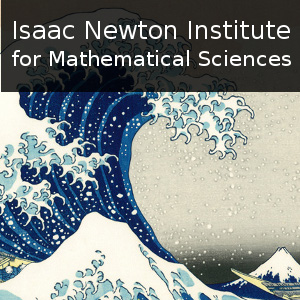Harnessing wave-power in open seas
54 mins 48 secs,
209.63 MB,
iPod Video
480x270,
29.97 fps,
44100 Hz,
522.28 kbits/sec
Share this media item:
Embed this media item:
Embed this media item:
About this item

| Description: |
Stiassnie, M
Tuesday 8th August 2017 - 14:30 to 15:30 |
|---|
| Created: | 2017-08-09 13:20 |
|---|---|
| Collection: | Nonlinear Water Waves |
| Publisher: | Isaac Newton Institute |
| Copyright: | Stiassnie, M |
| Language: | eng (English) |
| Distribution: |
World
|
| Explicit content: | No |
| Aspect Ratio: | 16:9 |
| Screencast: | No |
| Bumper: | UCS Default |
| Trailer: | UCS Default |
| Abstract: | The promise of wave-driven renewable energy is clear: with oceans covering more than 70% of the Earth's surface, and the ability of ocean waves, once created by the wind, to transport energy over large distances, it is natural to want to tap this vast resource. The rate of energy transfer from wind to waves is larger by a factor of 3 than the world's present power consumption. However, only 5 % of this power reaches coastal waters, the remainder being dissipated by wave breaking in open seas. This highlights the need to study wave-power harvesting in deep open seas: to estimate the global wave-power potential, develop devices suitable for deep water, and understand the geometry and layout of large arrays that will be needed to capture wave energy on a globally significant scale.
This talk will report on recent progress in these various directions. A novel self-reacting twin-cylinder wave energy converter (WEC) is discussed, which extracts energy from three modes of motion without requiring a fixed bottom reference. This WEC is employed to investigate survivability in extreme sea-states, and also as one element in a large array of energy converters. In order to overcome the computational complexities of multiple-scattering theory, a new approximate framework for sparse WEC arrays is developed, which allows fast and flexible calculations of array absorption, transmission, and reflection for changing wave conditions, including directional seas. The tools developed are also applicable to other resource assessment and WEC design studies, and present a move towards understanding the third generation of wave-energy converters: large, deep-water devices deployed in farms throughout the open ocean. References D. Xu, R. Stuhlmeier and M. Stiassnie, Harnessing wave power in open seas II: very large arrays of wave-energy converters for 2D sea states, J. Ocean Eng. Marine Energy 3 (2017), 151-160. D. Xu, R. Stuhlmeier and M. Stiassnie, Assessing the size of a twin-cylinder wave energy converter designed for real sea-states, submitted (arXiv:1605.00428). M. Stiassnie, U. Kadri and R. Stuhlmeier, Harnessing wave-power in open seas, J. Ocean Eng. Marine Energy 2 (2016), 47-57. |
|---|---|
Available Formats
| Format | Quality | Bitrate | Size | |||
|---|---|---|---|---|---|---|
| MPEG-4 Video | 640x360 | 1.94 Mbits/sec | 797.64 MB | View | Download | |
| WebM | 640x360 | 548.43 kbits/sec | 220.13 MB | View | Download | |
| iPod Video * | 480x270 | 522.28 kbits/sec | 209.63 MB | View | Download | |
| MP3 | 44100 Hz | 249.77 kbits/sec | 100.34 MB | Listen | Download | |
| Auto | (Allows browser to choose a format it supports) | |||||

